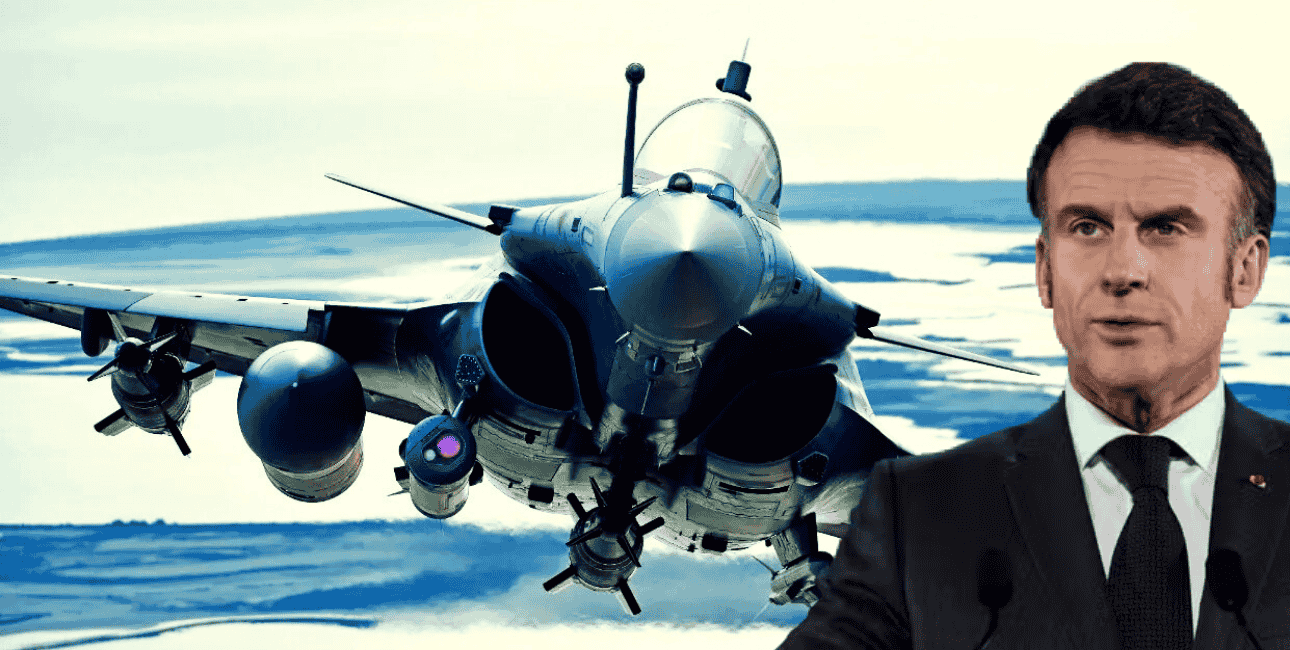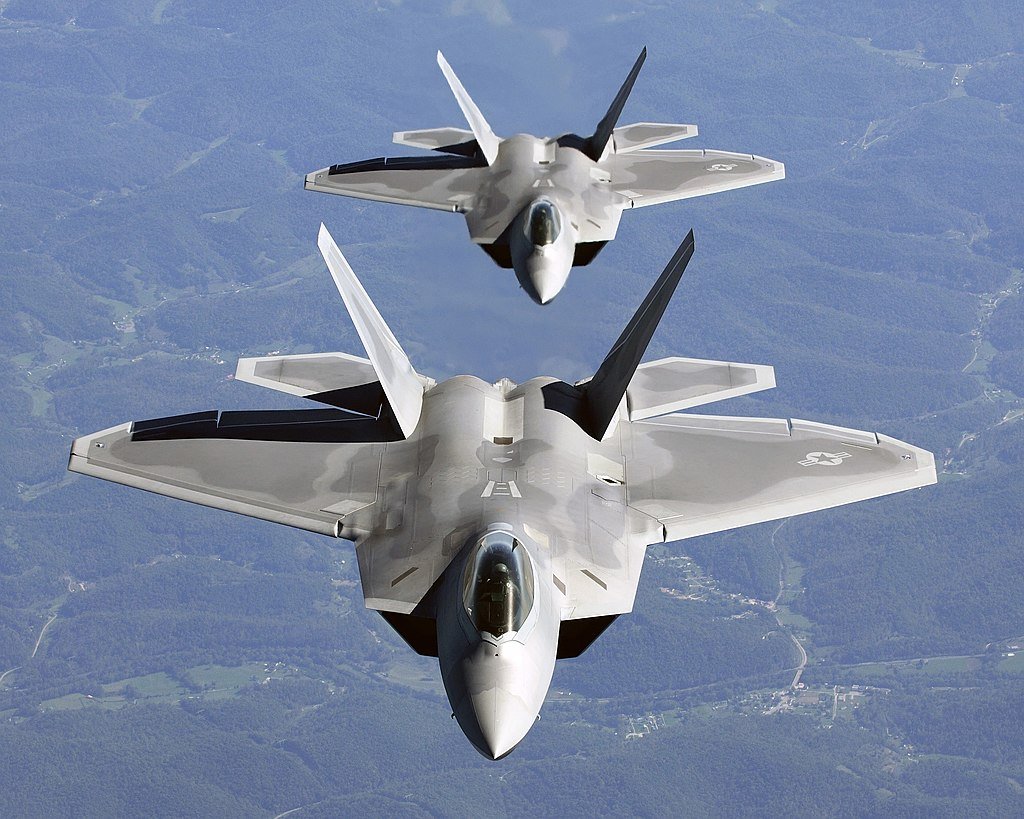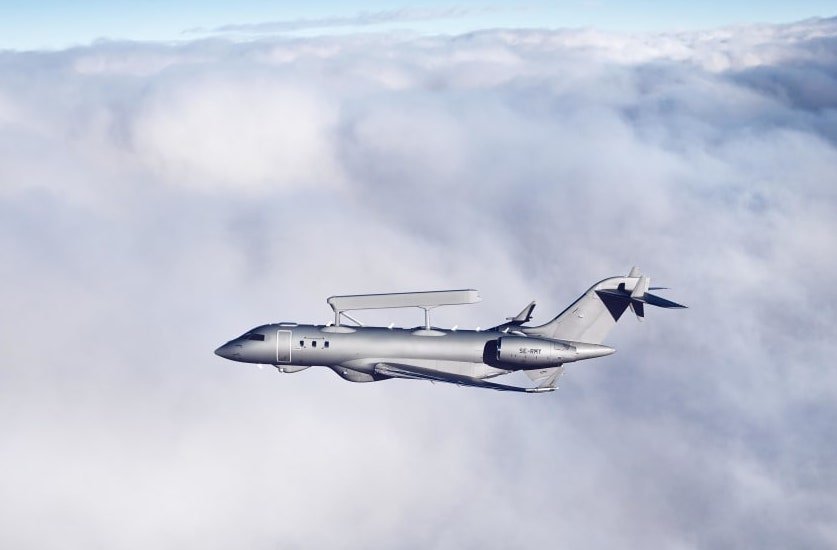As the transatlantic unity between NATO allies falters amid growing skepticism of American reliability, French President Emmanuel Macron is sensing an opportunity to push French defense platforms in the name of European ‘self-reliance.’
On June 20, during his visit to the Paris Air Show, Macron once again pitched the Dassault Rafale fighter jet to his European partners as a symbol of strategic autonomy and self-reliance in defense platforms.
Though Macron didn’t explicitly name the American fifth-generation stealth fighter jet, F-35, his promotion of Rafale in the name of European ‘self-reliance’ has renewed the debate of Rafale vs F-35, in the context of growing skepticism of US reliability under the leadership of Donald Trump.
Macron posted a photo of the French Rafale jet on X with the caption: “European friends, you have a call.”
European friends, you have a call. pic.twitter.com/VY7gmqPUKZ
— Emmanuel Macron (@EmmanuelMacron) June 20, 2025
The photo in the post showed a mobile screen with the picture of the Rafale fighter jet.
At the bottom of the picture was a green mobile phone call receiver icon, like the one visible when you get a call on your phone, with the message “Secure our Europe.”
Macron’s post on X was a quirky way to promote Rafale as Europe’s best bet to secure its future through self-reliance in defense platforms.
Notably, as many as 14 European countries are using / will use American F-35 fighter jets. This includes Portugal, which is likely to acquire US stealth jets but may change its decision. The non-EU European countries that use F-35 fighter jets are the UK, Norway, and Switzerland.
If Macron can promote the Rafale as an F-35 alternative in this European market in the name of strategic autonomy and self-reliance, then this would open up a significant market for France and Dassault Aviation.
Currently, apart from France itself, only three other European states, Greece, Croatia, and Serbia, are using Rafale combat jets.
Incidentally, this is not the first time that Macron has promoted the idea of European self-reliance in defense platforms, and weaning Europe away from excessive reliance on American defense firms.
“We must offer European alternatives to countries accustomed to American equipment… Scaling up production of these systems will lower costs and create a self-sustaining defense network across Europe,” the French President told reporters in March this year.
“Those who buy Patriot should be offered the new-generation Franco-Italian SAMP/T. Those who buy the F-35 should be offered the Rafale,” Macron told French media.
Not Just Europe, Macron Pushing Rafale In American Backyard
Canada ordered 88 fifth-generation F-35A fighters from the US in 2023. The first tranche of 16 jets, which has already been paid for, is scheduled to arrive in the country early next year.
However, the Canadian government is now reconsidering the purchase of the remaining fighters amid an escalation in diplomatic tensions with the Trump administration.
The deal has not been scrapped, but the government has asserted that it needs to “make sure that the contract in its current form is in the best interests of Canadians and the Canadian Armed Forces,” a defense ministry spokesperson said in March.
Canada has also signaled that other alternatives are currently under consideration. Prime Minister Mark Carney said, “We had a discussion about Canada’s options, and the fact is that under the [F-35] contract, as you may know, there are — after a certain number of purchases — we have options on subsequent aircraft.”
The two North American nations, which have traditionally been staunch allies, have been on a collision course since Donald Trump took office.
Furthermore, there is growing concern in Canada (and elsewhere) that, in the event of a disagreement or political fallout, the Trump administration could weaponize its control over the aircraft by blocking access to spare parts and software upgrades required to keep the aircraft flying and combat-ready.
Separately, a Parliamentary Budget Office (PBO) report published in November 2023 predicted severe price escalation in the F-35 deal that could cost the Canadian taxpayer billions of dollars more than was initially agreed upon
Incidentally, breaking with long-standing tradition, the new Canadian Prime Minister, Mark Carney, visited France ahead of the United States for his first foreign visit in March of this year.
There, Carney dubbed Canada “the most European of non-European countries” while speaking alongside French President Emmanuel Macron.

“It’s more important than ever that Canada reinforces its ties with our reliable allies like France,” Carney said at the Elysée Palace.
Carney’s decision to visit France ahead of the US carried an implicit message that Ottawa could consider Rafale amid growing opposition over the F-35 deal in Canada.
Rafale Vs F-35
Rafale’s current F4 variant doesn’t have much of an advantage over the F-35 when it comes to pricing. The American 5th-generation fighter can cost approximately $80 million per unit. In contrast, the French fighter is priced at approximately $100 million or more per unit, although the operational cost of the F-35 is significantly higher.
In terms of capabilities, Rafale is powered by two Snecma M88-2 turbofan engines providing an excellent thrust-to-weight ratio, whereas the F-35 is a single-engine fighter jet powered by a Pratt and Whitney F135 turbofan engine optimized for stealth and power. The Rafale has limited stealth capabilities and relies more heavily on electronic warfare systems, such as the SPECTRA suite.
In comparison, the F-35 is designed for stealth, featuring a low radar cross-section and utilizing radar-absorbent materials.
The Rafale features the Thales RBE2 AESA radar and advanced electronic warfare systems. At the same time, the F-35 also boasts cutting-edge sensor fusion, advanced radar, and a helmet-mounted display for superior situational awareness.
Rafale has various external hardpoints for a wide array of weapons, including air-to-air, air-to-ground, and nuclear payloads. The F-35 carries weapons in an internal bay for stealth missions but also has external hardpoints for additional payloads.
However, Rafale’s biggest issue is whether Dassault can crank up its production to meet the needs of European countries facing the biggest threats in recent times. In July 2024, Dassault Aviation’s order book swelled to a record 223 combat aircraft. These aircraft are divided into 64 for the French Air Force (AAE) and 159 for export.
CEO of Dassault Aviation, Éric Trappier, announced an increase in the Rafale production rate. He asserted that by 2025, assembly should reach three aircraft per month, up from the current two per month. That is roughly 36 fighter aircraft per year. Despite being significantly higher than its previous production rate, it is still significantly less than the full production rate of the F-35.
Compared to this, Lockheed Martin and the F-35 Joint Program Office increased the F-35 production to 156 planes per year in 2023. It is expected to remain at that level “for the foreseeable future.” The question remains: How does Dassault Aviation aim to meet the demand of its European allies should they choose Rafale for their air forces?
“Our upstream primary parts factories, subcontractors, and assembly plants are ramping up to deliver Rafales in line with our contracts, and we still have some capacity to take on new contracts,” Trappier stated in 2024. “For the time being, it’s the final assembly that’s the most difficult.”
Macron Practicing What He Is Preaching To Others
Notably, Macron is leading the charge for European self-reliance by practicing what he preaches to others.
During the Paris Air Show, Saab and the French defense procurement agency, Direction générale de l’armement (DGA), have signed a joint declaration of intent regarding the sale of Saab’s GlobalEye Early Warning and Control (AEW&C) aircraft to France, including ground equipment, training, and support.
The joint declaration includes DGA’s intention to procure two GlobalEye aircraft from Saab. The joint declaration of intent also includes an option for DGA to purchase two additional aircraft.
Notably, France picked a European AEW&C aircraft when it could have gone for the American alternatives, such as the Boeing E-7A Wedgetail, the Boeing E-3 Sentry, or the Northrop Grumman E-2D Advanced Hawkeye.
Clearly, Macron is putting his money where his mouth is. However, it remains to be seen how many European countries will pick the 4.5-generation Rafale over the fifth-generation stealth fighter jet F-35 or Eurofighter Typhoons, developed by a European consortium.
- Sumit Ahlawat has over a decade of experience in news media. He has worked with Press Trust of India, Times Now, Zee News, Economic Times, and Microsoft News. He holds a Master’s Degree in International Media and Modern History from the University of Sheffield, UK.
- VIEWS PERSONAL OF THE AUTHOR.
- He can be reached at ahlawat.sumit85 (at) gmail.com






